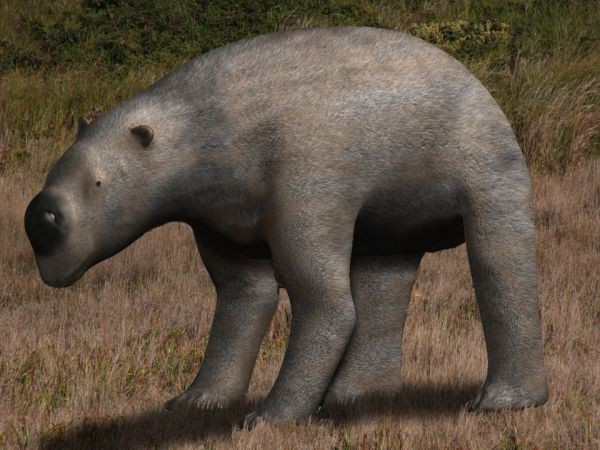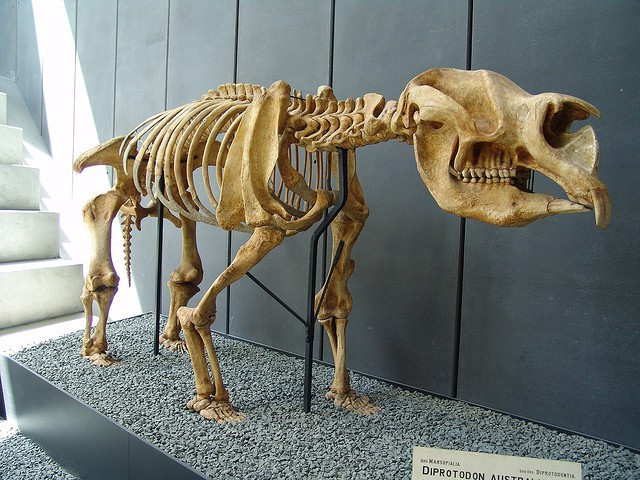Wombat Fossil Found as Big as Volkswagen Beetle
'Most complete and best preserved' prehistoric fossil of wombat discovered on Mornington peninsula

A wombat fossil the size of a car has been found in Australia and described by scientists as the "most complete and best preserved" of its kind.
The fossilised skeleton of a giant marsupial was found near Sorrento on the Mornington peninsula, southeast of Melbourne.
Researchers believe the wombat would have been about the size of a Volkswagen Beetle and would have weighed around a tonne.
The diprotodontid was a prehistoric creature that lived on coastal areas during the Ice Age and has been described as looking like a giant wombat.
Erich Fitzgerald, a palaeontologist at the Museum Victoria, said the skeleton was almost complete and very well preserved. Researchers say the fossil is at least 40,000 years old, but could be up to 200,000.
"This is probably the most superb example of this giant extinct marsupial yet discovered in Victoria," he told The Age. "Pending our final round of fieldwork it may yet prove to be one of the most significant examples of this kind of animal in Australia.''

The fossil was found by two locals who saw bones sticking out of some rock in Mornington Peninsula National Park. It took nine months to excavate the whole skeleton, which has now been taken away for analysis.
During the Ice Age, Australia was cool and dry, but was not frozen. "When this animal died it would have been very close to the sea ... ambling among the sand dunes," Fitzgerald said.
According to the Herald Sun, the discovery could provide clues as to why the giant wombat became extinct.
"What we can learn from these extinct animals is directly proportional to how much of the fossils we find, and in this case we've found a lot of the fossil and it's very well preserved, which means it's likely that from this one discovery we're going to potentially shed light on the life and times of this extinct marsupial."
The giant wombat is the largest marsupial ever to have lived. It was a herbivore that measured around three meters from nose to tail and was around two metres tall at the shoulder. It looked similar to a rhino without a horn.
Last year, scientists in Queensland discovered a mass grave containing around 50 diprotodons, which was described as a "palaeontologists' goldmine".
Lead scientist Scott Hocknull, from the Queensland Museum in Brisbane, said the animals appeared to have become trapped boggy conditions.
© Copyright IBTimes 2025. All rights reserved.






















